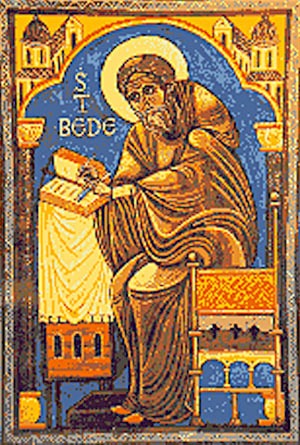Applying the Baconian method to the mind, John Locke, the great English philosopher, declared that everything which passes through the mind is a legitimate object of mental philosophy, and that these mental phenomena are as real and valid as the objects of any other science. In his investigations of the origin of phenomena Locke departed from the Baconian requirement that it was first necessary to make a natural history of facts. The mind was regarded by Locke to be blank until experience is inscribed upon it. Thus the mind is built up of received impressions plus reflection. The soul Locke believed to be incapable of apprehension of Deity, and man’s realization or cognition of God to be merely an inference of the reasoning faculty. David Hume was the most enthusiastic and also the most powerful of the disciples of Locke.
Attacking Locke’s sensationalism, Bishop George Berkeley substituted for it a philosophy founded on Locke’s fundamental premises but which he developed as a system of idealism. Berkeley held that ideas are the real objects of knowledge. He declared it impossible to adduce proof that sensations are occasioned by material objects; he also attempted to prove that matter has no existence. Berkeleianism holds that the universe is permeated and governed by mind. Thus the belief in the existence of material objects is merely a mental condition, and the objects themselves may well be fabrications of the mind. At the same time Berkeley considered it worse than insanity to question the accuracy of the perceptions; for if the power of the perceptive faculties be questioned man is reduced to a creature incapable of knowing, estimating, or realizing anything whatsoever.
In the Associationalism of Hartley and Hume was advanced the theory that the association of ideas is the fundamental principle of psychology and the explanation for all mental phenomena. Hartley held that if a sensation be repeated several times there is a tendency towards its spontaneous repetition, which may be awakened by association with some other idea even though the object causing the original reaction be absent. The Utilitarianism of Jeremy Bentham, Archdeacon Paley, and James and John Stuart Mill declares that to be the greatest good which is the most useful to the greatest number. John Stuart Mill believed that if it is possible through sensation to secure knowledge of the properties of things, it is also possible through a higher state of the mind–that is, intuition or reason–to gain a knowledge of the true substance of things.
Darwinism is the doctrine of natural selection and physical evolution. It has been said of Charles Robert Darwin that he determined to banish spirit altogether from the universe and make the infinite and omnipresent Mind itself synonymous with the all-pervading powers of an impersonal Nature. Agnosticism and Neo-Hegelianism are also noteworthy products of this period of philosophic thought. The former is the belief that the nature of ultimates is unknowable; the latter an English and American revival of Hegel’s idealism.
Dr. W. J. Durant declares that Herbert Spencer’s Great Work, First Principles, made him almost at once the most famous philosopher of his time. Spencerianismis a philosophic positivism which describes evolution as an ever-increasing complexity with equilibrium as its highest possible state. According to Spencer, life is a continuous process from homogeneity to heterogeneity and back from heterogeneity to homogeneity. Life also involves the continual adjustment of internal relations to external relations. Most famous of all Spencer’s aphorisms is his definition of Deity: “God is infinite intelligence, infinitely diversified through infinite time and infinite space, manifesting through an infinitude of ever-evolving individualities.” The universality of the law of evolution was emphasized by Spencer, who applied it not only to the form but also to the intelligence behind the form. In every manifestation of being he recognized the fundamental tendency of unfoldment from simplicity to complexity, observing that when the point of equilibrium is reached it is
A CHRISTIAN TRINITY.
From Hone’s Ancient Mysteries Described. In an effort to set forth in an appropriate figure the Christian doctrine of the Trinity, it was necessary to devise an image in which the three persons–Father, Son, and Holy Ghost–were separate and yet one. In different parts of Europe may be seen figures similar to the above, wherein three faces are united in one head. This is a legitimate method of for to those able to realize the sacred significance of the threefold head a great mystery is revealed. However, in the presence of such applications of symbology in Christian art, it is scarcely proper to consider the philosophers of other faiths as benighted if, like the Hindus, they have a three-faced Brahma, or, like the Romans, a two-faced Janus.

Moe is the founder of GnosticWarrior.com. He is a father, husband, author, martial arts black belt, and an expert in Gnosticism, the occult, and esotericism.



